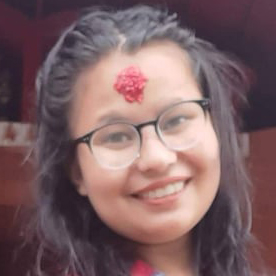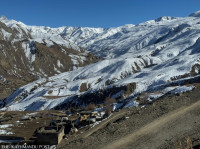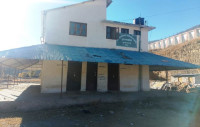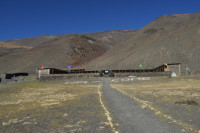Karnali Province
Many quake-hit children yet to rejoin school
Out of 423 schools in Jajarkot, 289 have become uninhabitable or unsafe.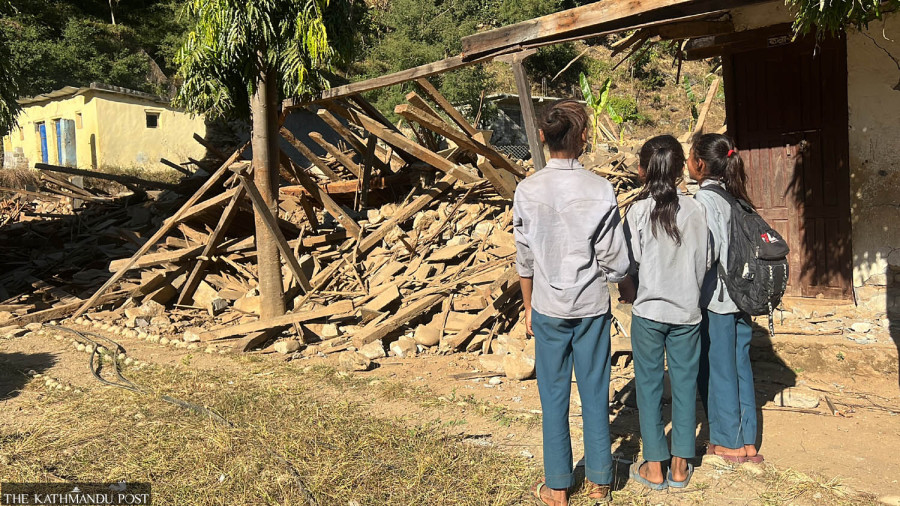
Tripti Shahi
Bhumika Pun, a grade 10 student at Tribhuvan Secondary School in ward 7 of Nalgad Municipality, has stopped attending classes since the November 3 earthquake. She is mourning the loss of her 14-year-old sister and several classmates who perished in the earthquake.
“I have not been able to sleep at night. I’m afraid there will be another earthquake and I will not be so lucky this time,” she said. “I cannot focus on anything, forget going back to school. We are living under a tarpaulin tent. We lost everything. I don’t have warm clothes so I stay inside all day.”
Pasang Malla Pal, a grade 10 student at Bheri Triveni Secondary School in Rimna in ward 1 of Bheri Municipality, started going to school only a few days ago although his school reopened on November 20. “I wanted to go back as soon as the school reopened so that I could keep myself occupied. But all my school books, study material and uniform are buried under the debris,” he said. “I started going to the school after some organisations working in quake-affected areas gave me a couple of exercise books.”
According to Bijay Malla, teacher of Bheri Triveni Secondary School, there are 72 students in grade 10 who will be appearing in the Secondary Education Examination (SEE) this year, but only around 29 students are coming to school. And among these 29 students, over 60 percent are coming without any books.
“Only about 30 percent of the students are back to school, but they too don’t have any books or textbooks so they just sit in class and listen to the teachers,” said Malla. “I am afraid that their grades will be affected by this.”
Bhim Bahadur Basnet, the principal of Bageshwari Basic School located in Tite, in ward 1 of Bheri Municipality, said he had been urging parents to send their wards to schools, but the attendance still remains low.
“Most people lost someone or something in the earthquake. Some parents are not sending their wards to school due to a lack of winter clothes and study materials and the fear of another earthquake, as the school building has also been damaged by the earthquake. Nearly all residents of Bheri-1 are living under tents after their houses were destroyed or rendered inhabitable. We lost two of our students in the earthquake,” said Basnet. “I am concerned about grade 8 students as they will be taking their Basic Level Examination [BLE] this year.”
Rudra Bahadur Wali, a teacher at Bheri Triveni Secondary School in Bheri-1, said that some students from nearby areas who are also living under tarpaulin tents are coming to school, but over 70 percent of students are still absent.
“More than 200 students from various wards of Bheri and Nalgad municipalities used to live in rented rooms near the school. Since the earthquake, only a few have returned. More than 50 students are scheduled to sit for SEE exams,” said Bali. “The students are going through a lot of mental stress. They need professional counselling to help them get through this trauma and only then can they concentrate on their studies and board exams,” he said.
According to Ramesh Kumar Malla, head of the Education Development and Coordination Unit, Jajarkot, 24 students and two teachers died in the Jajarkot earthquake. Similarly, more than 35 students, five teachers, and a couple of school staff were seriously injured.
Of 423 schools in the district, 289 have become uninhabitable or risky to enter. More than 2,396 textbooks of various grades have been reported to have been lost or damaged in the earthquake, according to the Education Development and Coordination Unit.
“In most schools, classes are being conducted out in the open. Teachers are conducting classes verbally as a lot of study materials could not be salvaged. Several governmental and non-governmental organisations have also established alternative teaching centres in the earthquake-affected areas, and classes are being conducted from there,” Ramesh said. “Currently, discussions are being held to make alternative teaching centres more effective as it will take time to fix earthquake-damaged school buildings,” he added.




 11.12°C Kathmandu
11.12°C Kathmandu